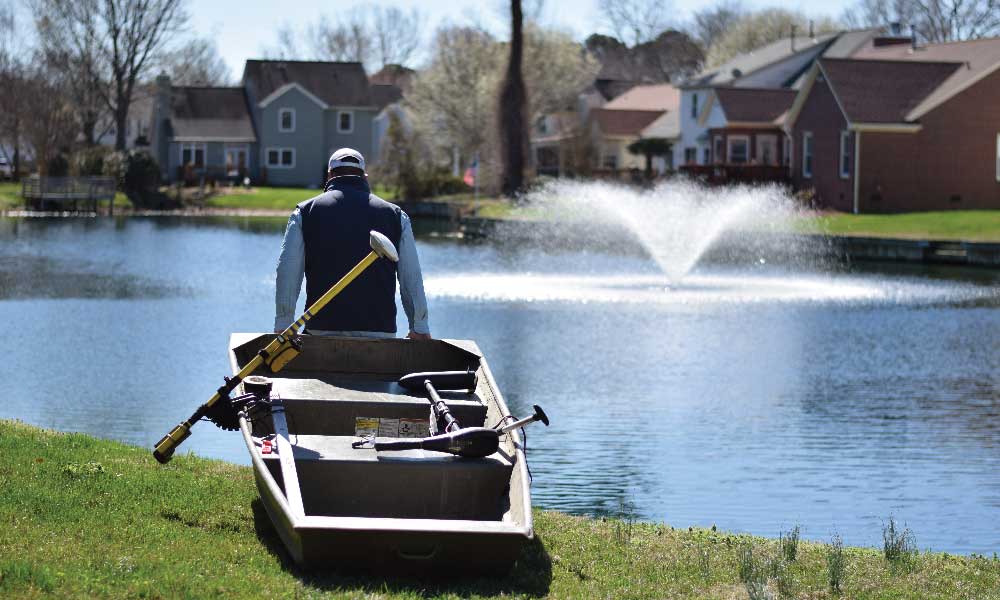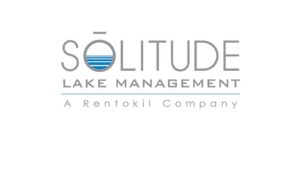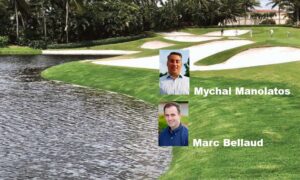One of the superintendent’s biggest fears is not having enough water in their irrigation ponds, especially during the dry season when rain is not in the immediate forecast. As a former assistant golf course superintendent, I remember times when our irrigation lake was extremely low, and our greens could not go one more night without water. I knew there was a good chance that I’d be hand watering them several times the next day, and each day without rain seemed to require more applied water than the one before. I knew I would soon be staring at mud in the irrigation lake.
This is not a situation that any golf course or turf manager wants to find himself or herself navigating, yet it seems to happen at some point every year. Along with the tremendous amount of scientific research, management techniques and cutting edge pesticides that are available to manage turf, there are strategies and tools that are equally important to ensure your ponds are managed properly, they are aesthetically pleasing to your guests, and that they can maintain their capacity for irrigation – one of the industry’s most important maintenance tasks.
If you ever questioned what the water-storage capacity is in your irrigation pond or wondered how much water you have left you are an ideal candidate for bathymetry. Bathymetry, which is a study of the three-dimensional volume and bottom contours of a waterbody, can answer your questions and help you budget for the short- and long-term maintenance required to keep your pond in working order. Looking below the water surface is very similar to analyzing a soil test report or evaluating the root system of your greens.
If you observe that your pond’s capacity is decreasing, the bathymetric study will likely indicate that it has accumulated too much sediment and organic matter. All lakes and ponds have a natural lifespan that can be cut short by an abundance of sediment buildup, nuisance algae, vegetation growth, animal activity or a combination of these factors. Poor bank stabilization, improper buffer management and increased upstream development can also be large contributing factors to undesirable sedimentation.
If proper management strategies are not implemented to maintain sufficient depth and volume, your water resources will eventually reach a point of no return. In this event, dredging is generally the only option available to restore the original volume. While dredging is effective and usually necessary at some point in a lake or pond’s lifespan, it is extremely costly. Luckily, tools like bathymetry provide valuable data that can be used to calculate how soon dredging will need to occur and design a management plan to prolong the need for as long as possible. Bathymetry is also crucial to help estimate the eventual expense so you can start budgeting sooner rather than later.
Just as no two waterbodies are the same, no two management plans should take the exact same approach. However, many lakes and ponds can benefit from some combination of proactive management solutions like buffer management, bioengineered shorelines, fountains and aeration, nanobubble technology, hydro-raking, nutrient remediation, and regular water quality assessments. Whether your golf course ponds are already exhibiting depth and volume problems, or you would like to get ahead of potential issues before they become too costly, your lake management professional can design a custom management plan that aligns that helps protect the longevity of your irrigation ponds.
Trent Nelson is a Business Development Consultant with SOLitude Lake Management, a nationwide environmental firm that provides sustainable lake, stormwater pond, wetland and fisheries management solutions. Learn more at www.solitudelakemanagement.com/knowledge.

























